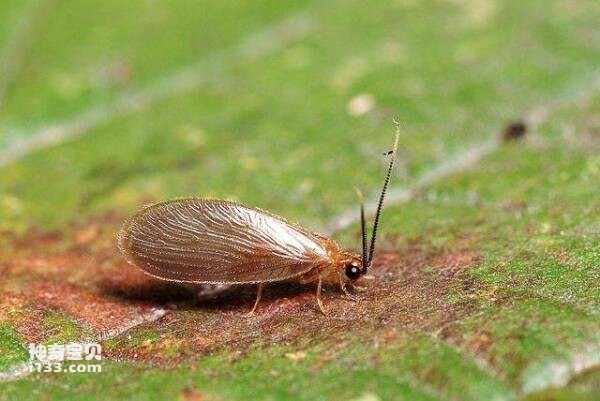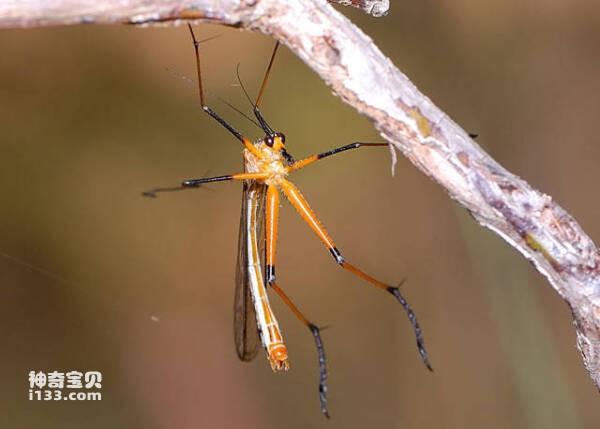The head is the frontmost segment of the insect's body, which is the sensory and feeding center. The head is composed of several body segments that are fused together, with a hard outer wall to form a head shell. There is a pair of antennae on the top and front of the head, and the mouthparts (mouth) on the bottom. There is usually a pair of large compound eyes on both sides, and there are often 1 to 3 small single eyes on the top of the head. The shape of these organs varies with different insect species.

The thorax is the section of the insect's body immediately behind the head, connected to the head by a stretchable membrane. The thorax is the movement center of insects and consists of three body segments: prothorax, mesothorax and metathorax. Each thoracic segment has a pair of legs, and the middle and metathorax usually have a pair of wings each.
The thorax is the center of movement of insects. The wings that enable insects to fly grow on the chest, and the legs that enable insects to walk also grow on the chest. It can be seen that the chest plays a decisive role in insects.
The thorax is composed of three body segments: prothorax, mesothorax, and metathorax. Each thoracic segment has a pair of legs. Winged insects also have a pair of wings on the mesothorax and metathorax. Since the front chest is wingless, it has nothing to do with flying, and its degree of development is often related to the front feet. The mantis has a pair of very developed catching front legs, and its front chest is also very extended. The prothorax of most winged insects is much smaller than the middle and metathorax. The mediothorax and metathorax are very developed in winged insects.

The abdomen is the last large section of the insect's body and is connected to the thorax in the front. It is the center where insects digest food and reproduce. The abdomen generally has 9-11 sections; in a few species, it is reduced to 3-6 sections. The last few segments often merge or degenerate. Sometimes the first segment merges with the last segment of the thorax to form a thoracoabdominal segment. The structure of the remaining segments is very similar, consisting of a dorsal plate and an abdominal plate. The first 8 segments usually each have a pair of spiracles. The internodes are connected by folded membranes, so the insect's abdomen can expand and contract freely. For example, when a locust lays eggs, it can elongate its abdomen and lay its eggs in deeper soil, mainly relying on the internodal membrane. role. A pair of tail whiskers grows on the last segment, which plays a sensory role.

The "skin" on the surface of the insect's body is hard and cannot be bent at will, just like wearing a set of armor. We call it the body wall, which is the insect's outer skeleton containing chitin. The body wall of insects plays a very important role for insects. It must be hard and strong enough to withstand muscles, protect the body from mechanical damage, and prevent excessive evaporation of water, but it must also have a certain degree of flexibility. The body wall serves as a protective barrier that separates the insect's internal organs from the outside environment. It can be said that it is both skin and bones. As the former, it helps insects effectively retain moisture and prevents the invasion of undesirable external factors. As the latter, it determines the external form of the insect body. This ingenious structure that kills two birds with one stone lays a good foundation for the survival and development of insects.
The body wall can be divided into three main layers, from the outside to the inside, they are the epidermis layer, the epithelial cell layer and the basement membrane. The epidermis is a non-cellular substance secreted by the skin cell layer. Many properties of the body wall, such as rigidity, elasticity, impermeability, resistance to invasion by foreign objects, and bone-like support, are properties exhibited by the epidermis. The epidermis can be divided into the outer epidermis (from the outside to the inside, the protective wax layer, the wax layer and the cutin layer) and the inner proto-epidermis (a complex of chitin and protein). The cortical cell layer is a living tissue with a continuous single layer of cells and has a relatively active secretory function; the secretory activity changes periodically with the process of molting. The specialization of skin cells can also form the external growths on the insect body such as bristles, scales, spines, spurs, various glands embedded in the body, and various sensory organs such as vision and hearing organs. The basal membrane is a thin film immediately under the skin cell layer. It is secreted by blood cells and its main component is neutral mucopolysaccharide. It plays a role in isolating the skin cell layer and the blood cavity.

Insects are extremely rich in color. Some insects are bright and dazzling, and even show unpredictable metallic colors. Others are dull, old and have no beauty at all. So how are the different colors of insects formed? Do different colors have any special significance to insects?

Most of the colors of insects are produced by the body wall and its derivatives, and some also come from different subcutaneous tissues or blood. According to the causes of color, we divide it into two categories: one is pigment color, which is a color formed by pigment compounds. These substances can absorb certain light waves and reflect other light waves, thereby forming various colors. Most of them are products or by-products of metabolism, such as melanin, carotenoids, pteridines, etc. When pigment is present inside the epidermis, we call it epidermal color. The skin color remains stable for a long time after the insect dies, such as the spots on the wings. If the pigment is located in the dermal cells under the epidermis, it is called dermal color. The dermal color often disappears as the insect dies. Some insects are bright green when they are alive, but soon after they are made into specimens, the bright green gradually turns into yellowish brown. This is the reason. Another type of color is structural color, which is formed by refraction, reflection and interference caused by light shining on different structures on the surface of the insect body. The metallic luster of an insect's body is a structural color, and the structural color will not change or disappear due to insect death or treatment such as boiling or bleaching. Most of the colors of insects are mixed with the above two colors, which are called mixed colors. For example, there is a beautiful butterfly called the Phantom Purple Gorge Butterfly; its wings are yellow-brown; when viewed from different angles, it appears dreamy. A general purple flash, in which yellowish brown is the pigment color and purple flash is the structural color. With such colors, insects can attract the opposite sex to mate, hide or demonstrate to avoid enemies, and can also protect themselves from light.
animal tags:
We created this article in conjunction with AI technology, then made sure it was fact-checked and edited by a Animals Top editor.